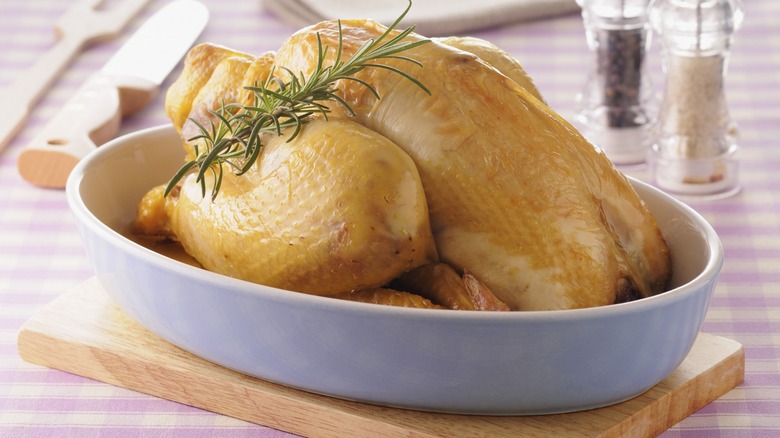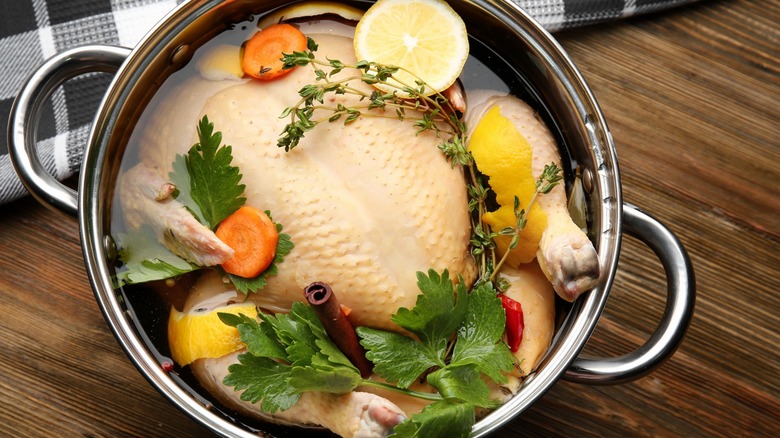The Major Mistake You Should Avoid When Wet Brining Chicken
We've all heard about the magic of brining, the process of immersing meats in a flavorful saline solution to enhance moisture retention, tenderness, and taste. When it comes to poultry, most of us are used to brining turkey, but chicken can also greatly benefit from this technique, rendering its meat juicier and more flavorful than you could ever imagine. However, if not careful, there's one major mistake that could result in a lackluster finished dish — not completely submerging the chicken in the wet brine.
The science behind wet brining ensures the salt in the brine alters the protein structure of the meat, allowing it to absorb and retain more water. Additionally, the flavors in the brine get drawn into the meat, deeply seasoning it from skin to bone. But for this magic to happen uniformly, the chicken must be completely enveloped in the salty bath. When parts of the bird aren't fully submerged, they don't get the full benefits of the chicken brine. This results in uneven flavor and inconsistent texture throughout the chicken. One bite might be succulent and perfectly seasoned, while the next could be bland and dry.
How to perfect the wet brining process for the tastiest chicken
Avoiding this pitfall is simple. First, always use a vessel that's large enough to fit the chicken but not so large that the brine gets spread too thin. This guarantees that you're using the right amount of liquid relative to the chicken size. Before adding salt to the water, place your chicken in the pot and cover it with plain water, then remove the bird and measure the water to establish the amount of brining liquid you'll need to prepare. In a case where you've made your brine solution in advance and, upon dipping the chicken, you find it's not enough to completely cover the bird, don't just top it off with plain water. Instead, make more brine solution. This is crucial to avoid disrupting the proper salt-to-water ratio.
Moreover, if you're concerned about the chicken floating or certain parts popping out of the brine, consider placing a heavy plate or bowl (ceramic is a good option) on the chicken to keep it submerged for the duration of the process. Alternatively, use a Ziploc or brining bag for your briny ventures, which ensures your bird is completely enveloped in the brine solution. In essence, like every culinary technique, attention to detail is paramount. Making sure the chicken is fully submerged is a key step in wet brining that helps create a uniformly tender, juicy, and flavorful dish.

